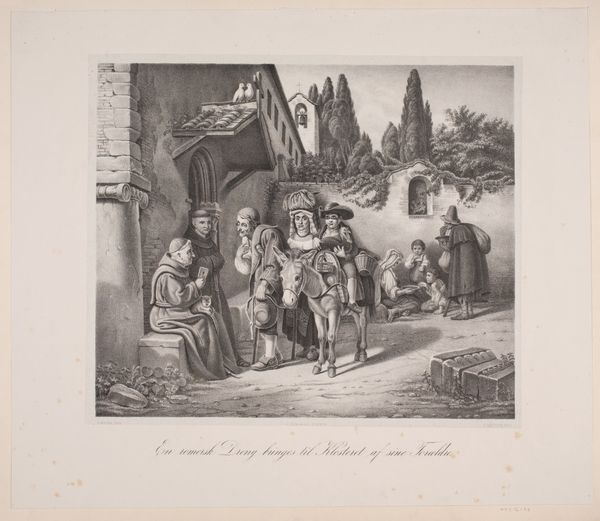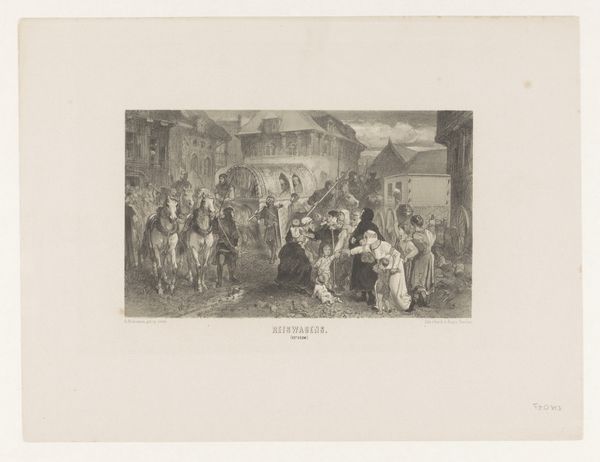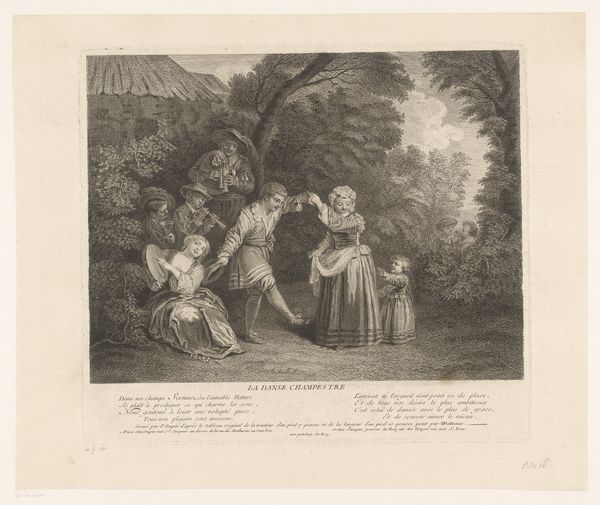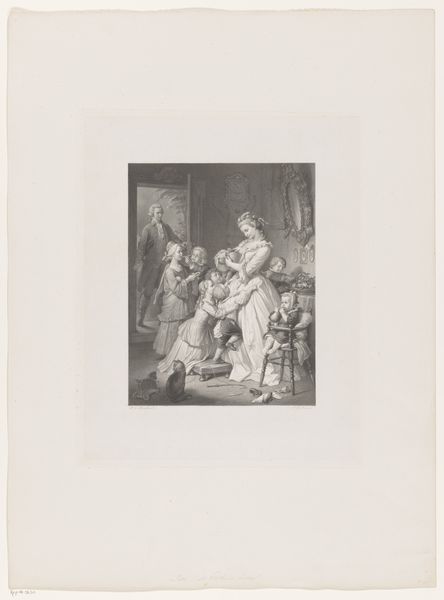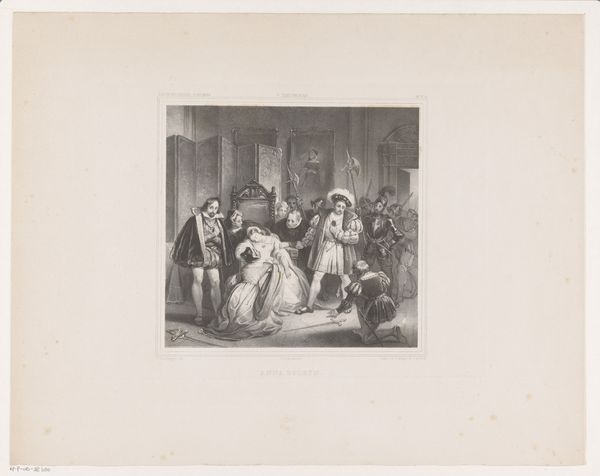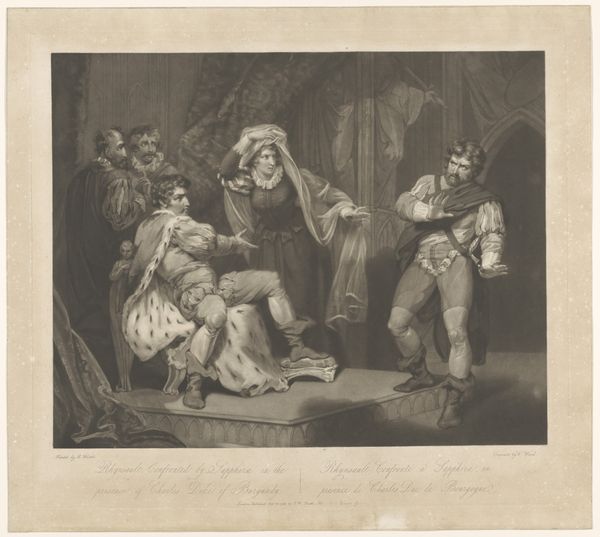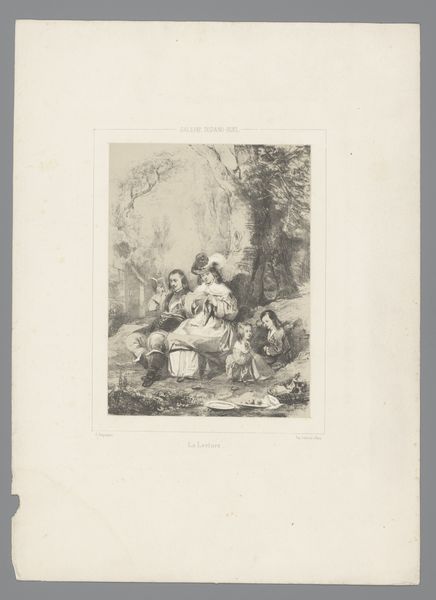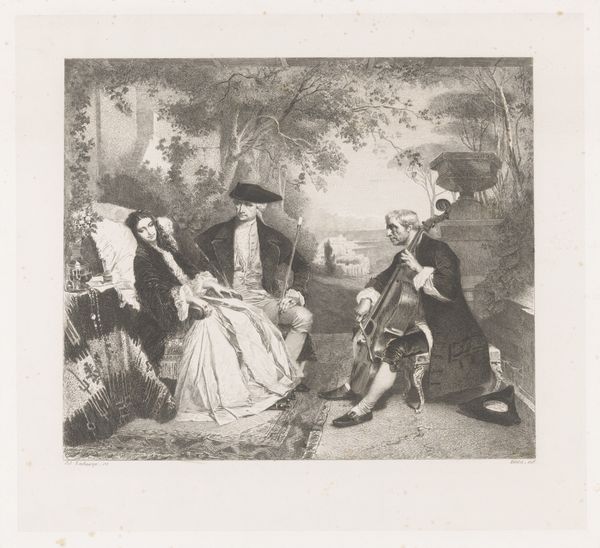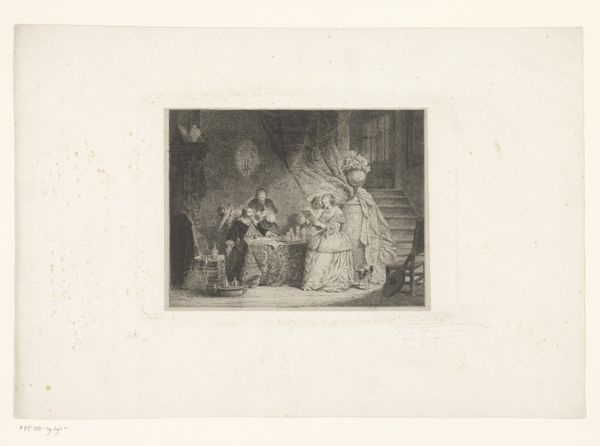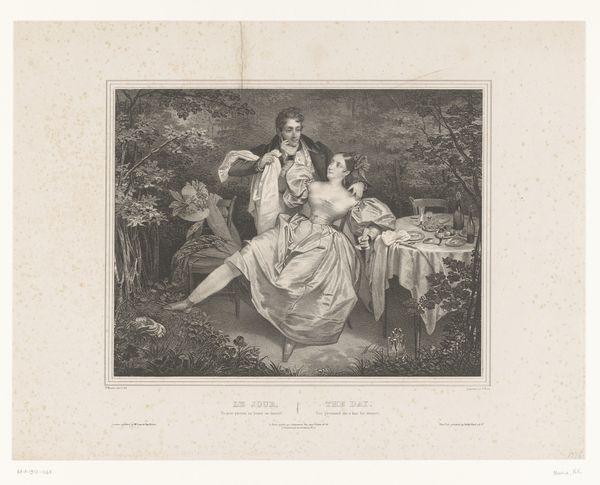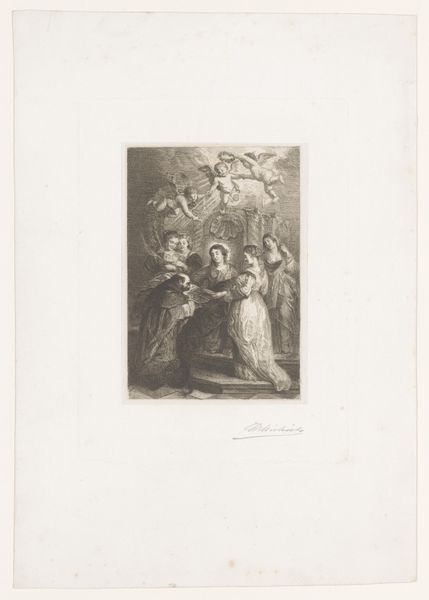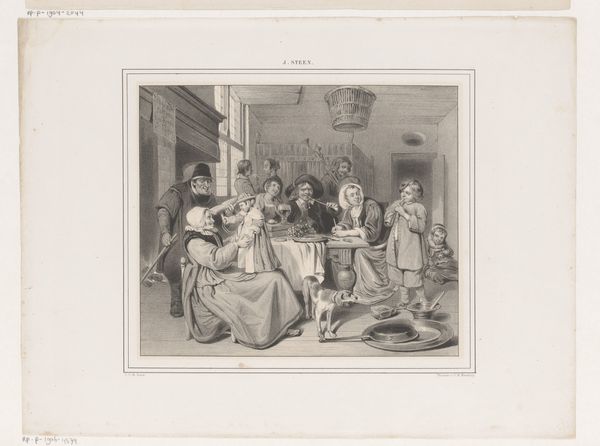
print, engraving
#
narrative-art
# print
#
landscape
#
genre-painting
#
history-painting
#
engraving
#
realism
Dimensions: height 495 mm, width 656 mm
Copyright: Rijks Museum: Open Domain
Curator: Here we have an engraving from 1881 titled "Awakening of Spring" by Georg Goldberg. It seems to capture a scene brimming with youthful energy. My first impression, before even delving into its details, is just how technically impressive it must have been to create something with this level of detail through engraving. Art Historian: Yes, it evokes a kind of nostalgic pastoral charm. My eye is drawn to the arrangement of the children. The composition strikes me as carefully arranged. It's not just a spontaneous snapshot, is it? It's almost staged. Curator: Definitely. Consider the socio-economic context: prints like these, reproduced via engraving, were instrumental in disseminating imagery to a wider audience. Goldberg clearly caters to middle-class taste here. The print medium allowed for accessibility and circulation. Who was he thinking about when composing? Art Historian: The symbolism feels intentional. The flowers, for instance – spring flowers suggesting renewal, innocence... all those conventional associations with childhood. And that central figure, perhaps a mother, anchors the image and ties it back to classic madonna imagery? The light caressing the group certainly adds weight. Curator: Precisely! Think about the labor involved: the engraver translating an original artwork, probably a painting, into a reproducible format. The skill demanded immense control over materials—metal, tools—to achieve that level of fidelity. So, while seemingly sentimental, it is simultaneously testament to workshop skill, a sign of growing cities and burgeoning industries. I do think about it that way first. Art Historian: And observe the architecture of the background: the balustrade with overflowing greenery gives us a classical vibe – echoes of Renaissance paintings. Goldberg wants us to think about the continuum of beauty, domestic virtue, perhaps some sort of visual echo to underscore his primary figures. All meant to elevate the moment to something more than merely descriptive. Curator: Exactly. It's easy to dismiss such pieces as mere genre painting, but a closer examination reveals intricate labor divisions, material economies, the whole process from inspiration to print. Art Historian: Well, that definitely casts the composition and iconography in a different light! This interplay between labor and symbolism enriches our understanding. Curator: Agreed! And recognizing the print as commodity expands its social value beyond a sentimental image of a gathering, and towards its place in larger material economies and class interests. Art Historian: Now, looking again, that adds a further interesting, unsettling layer of commercial expectation of beauty and innocence to it. Thank you! Curator: And you have opened up a space for my appreciation of visual vocabulary to better place the material context of images within societies, I feel it. Thanks.
Comments
No comments
Be the first to comment and join the conversation on the ultimate creative platform.
